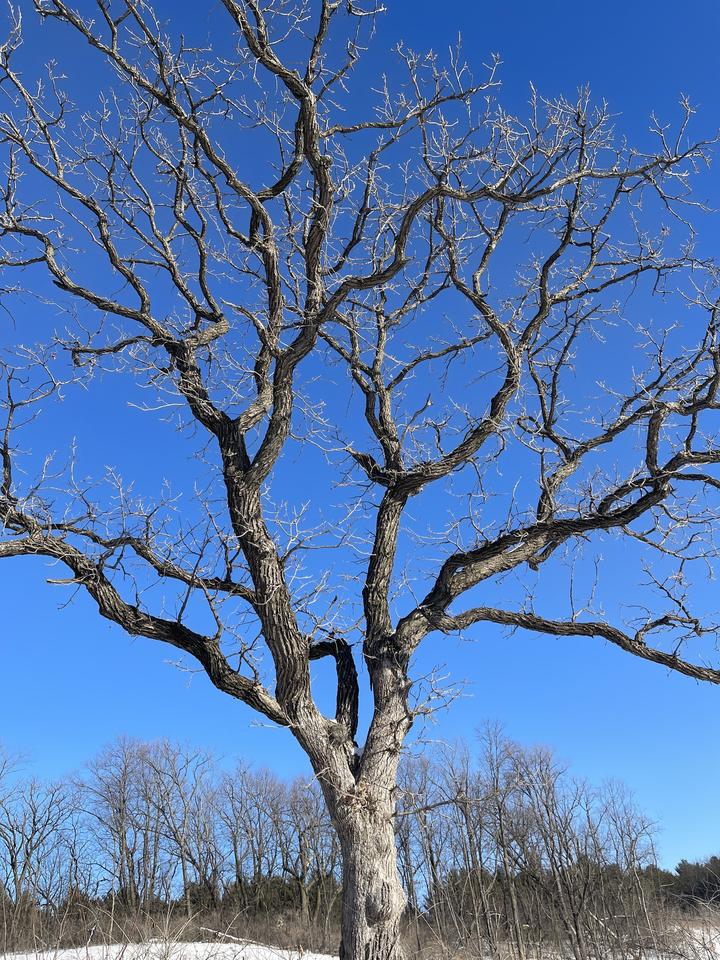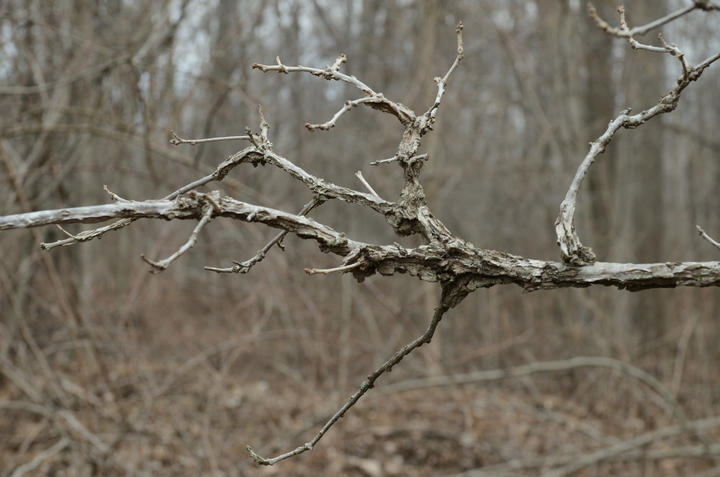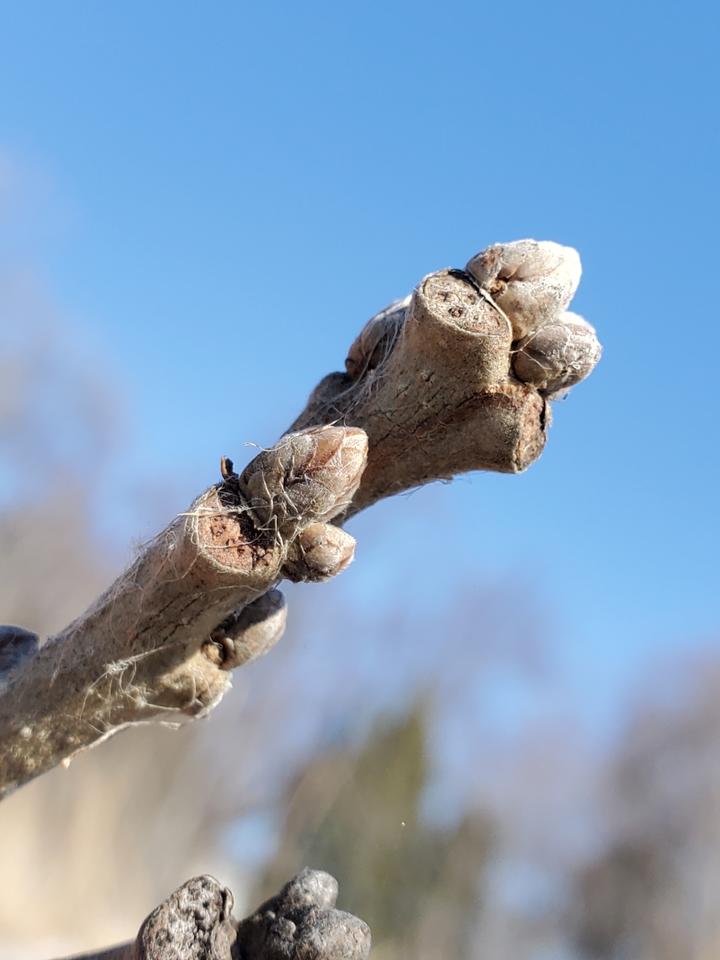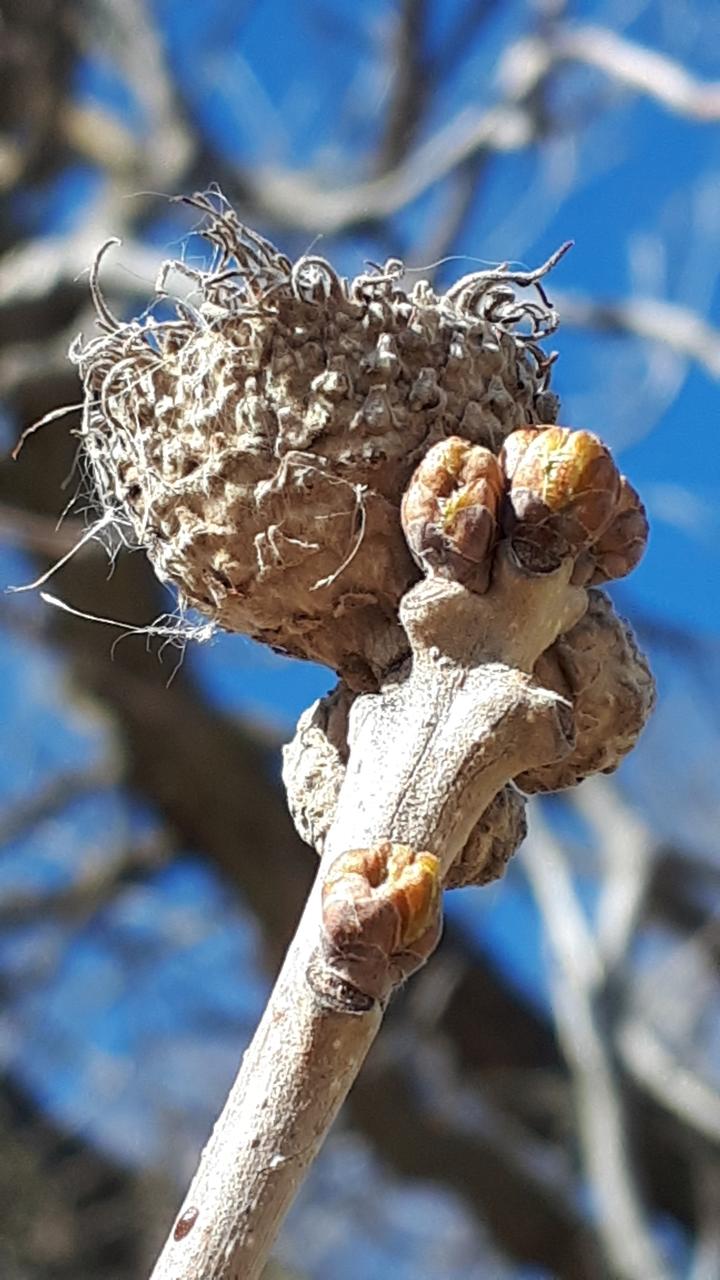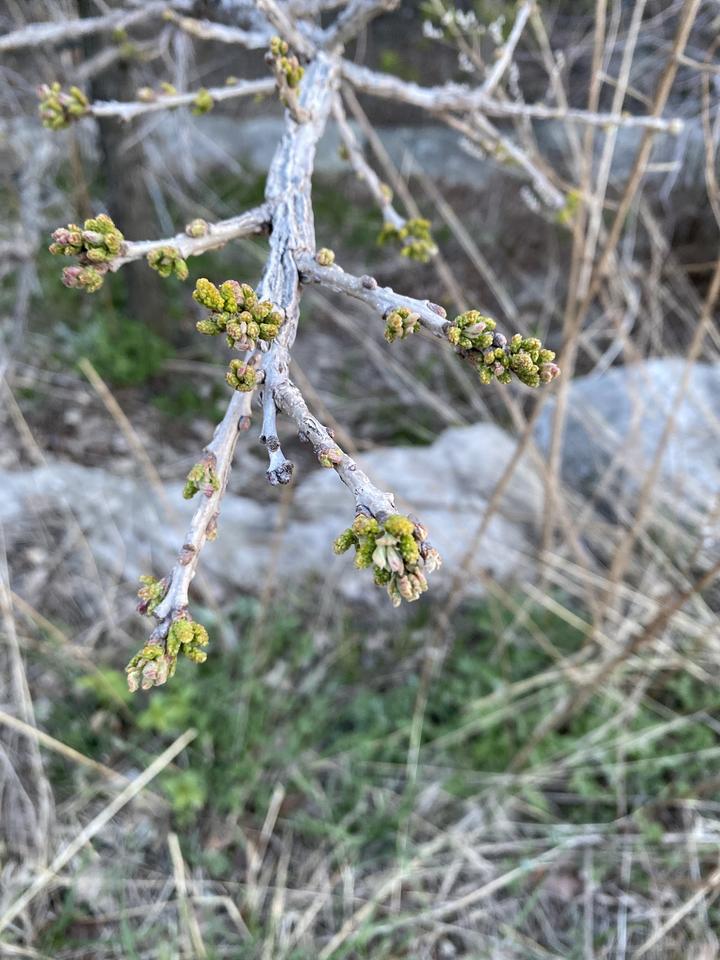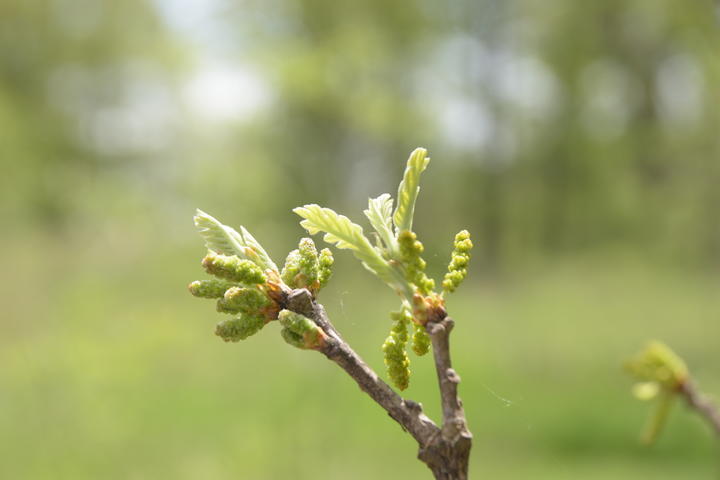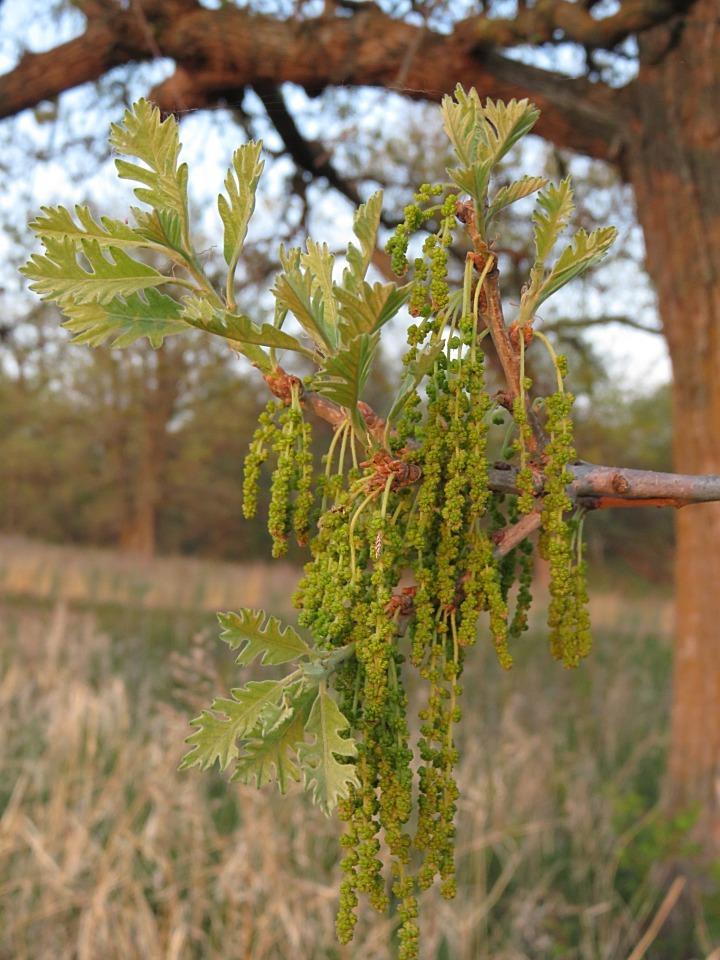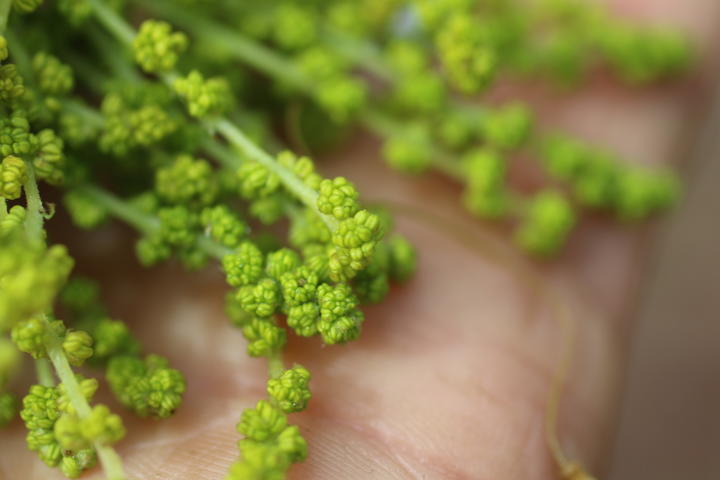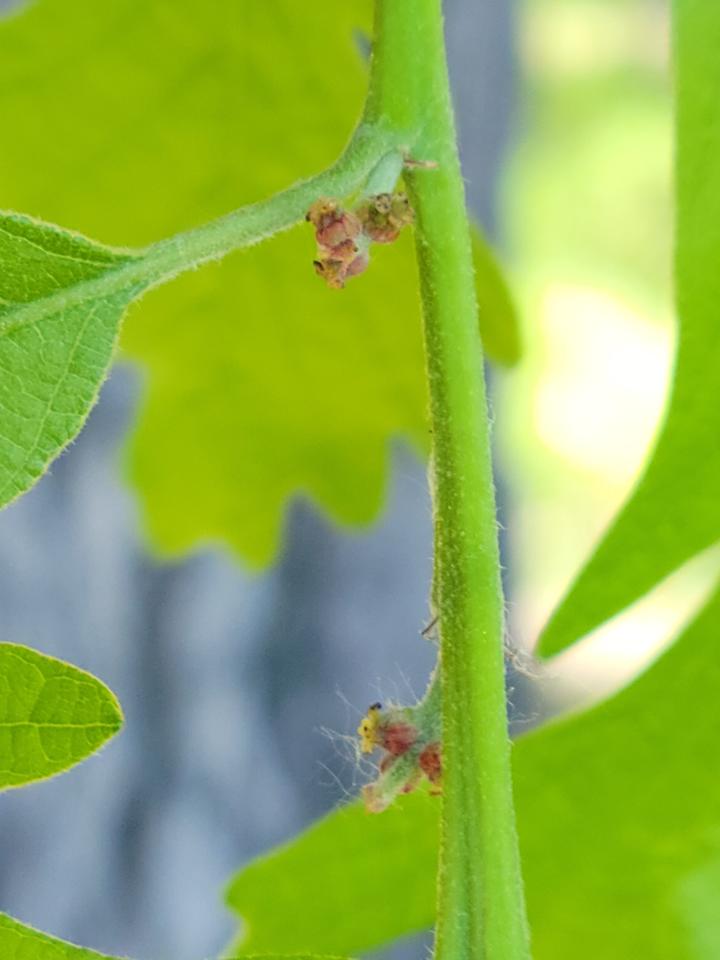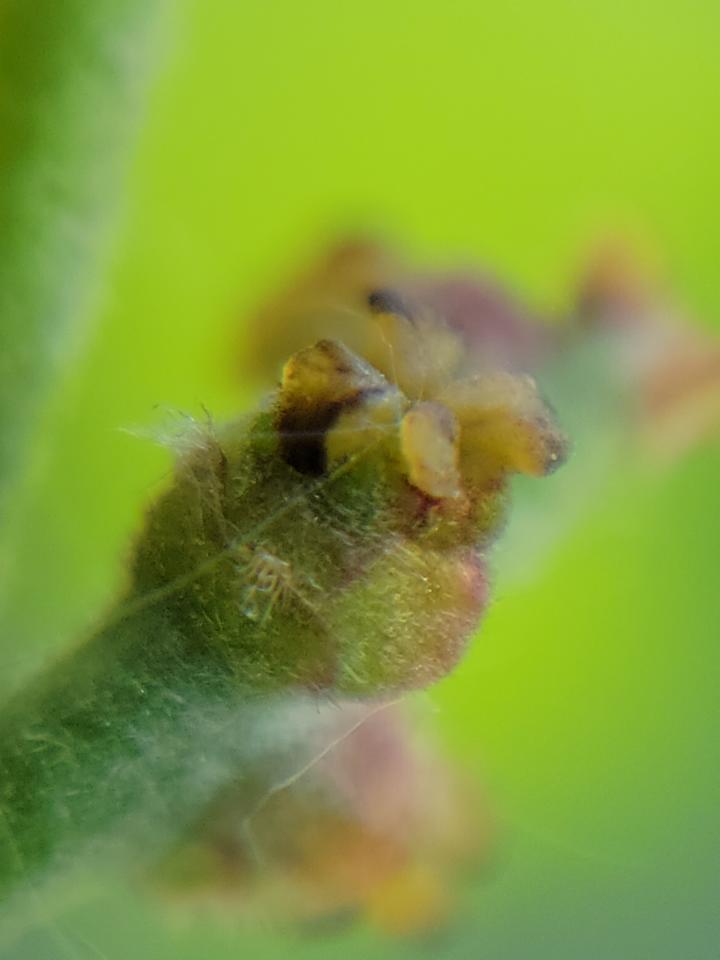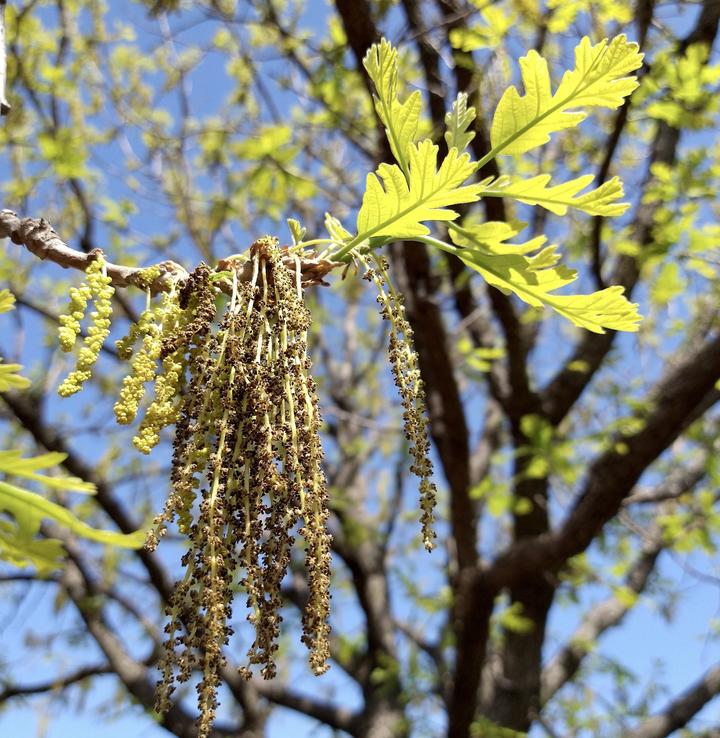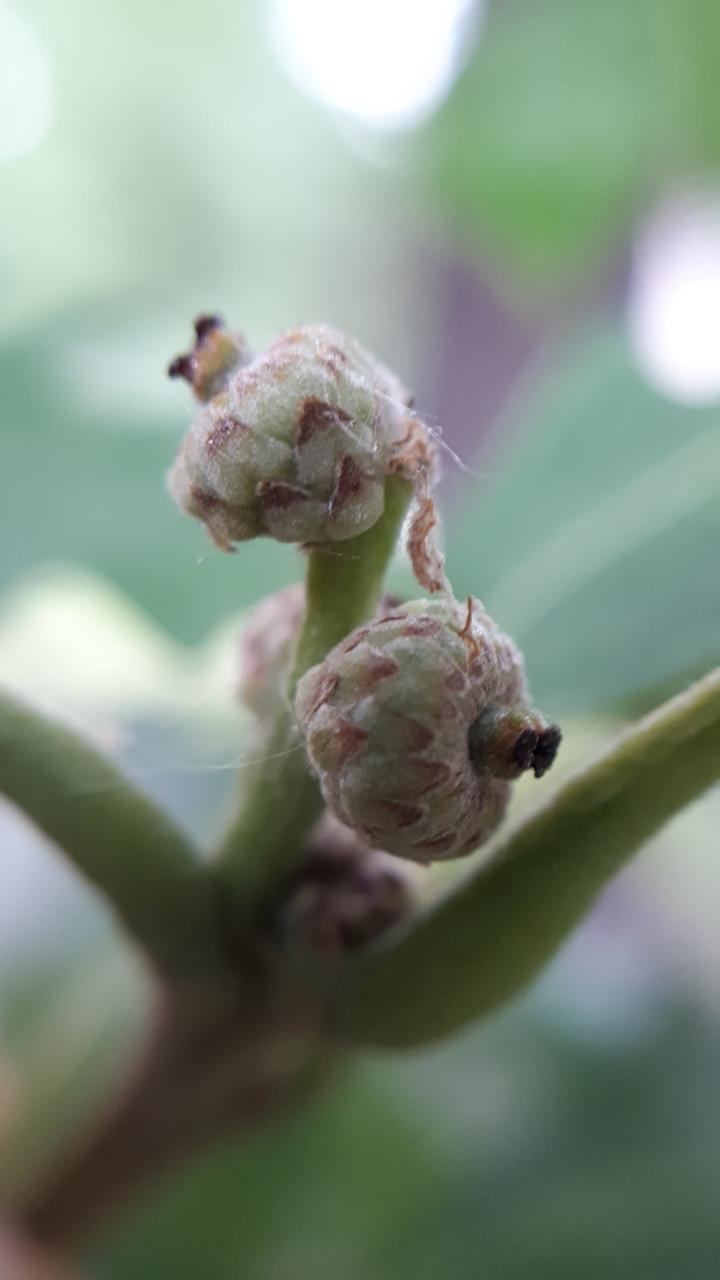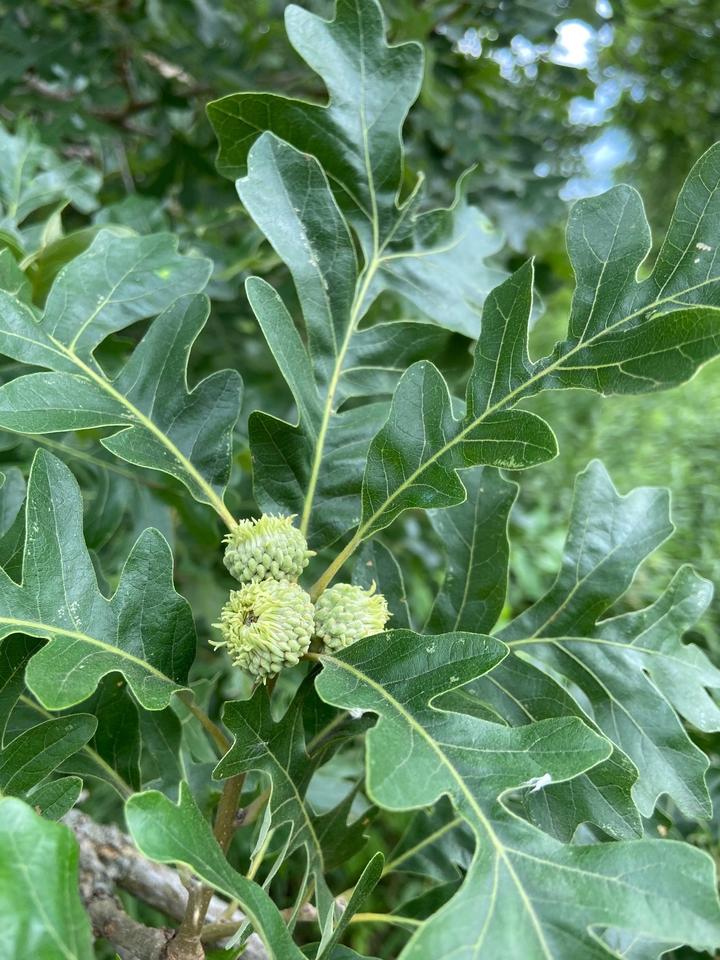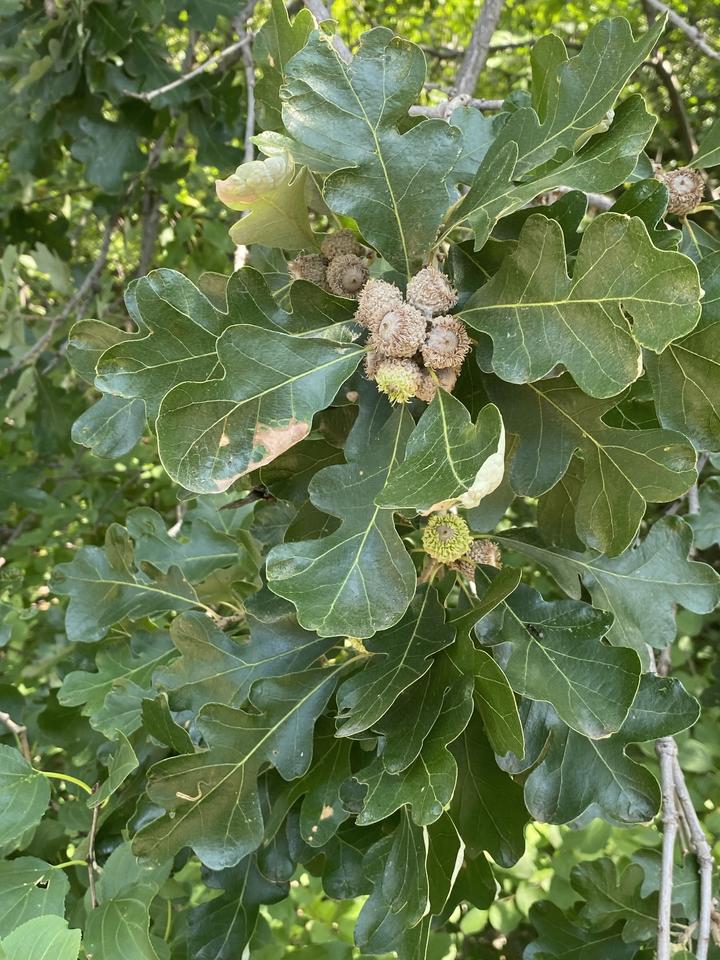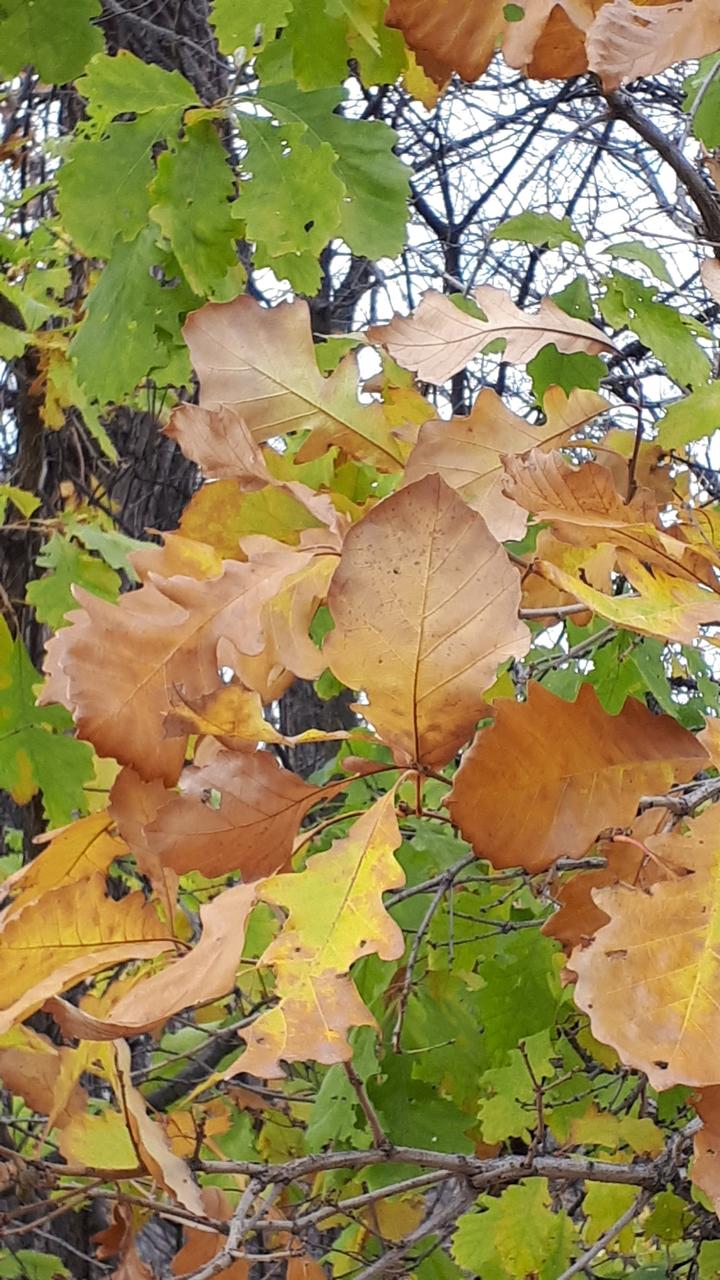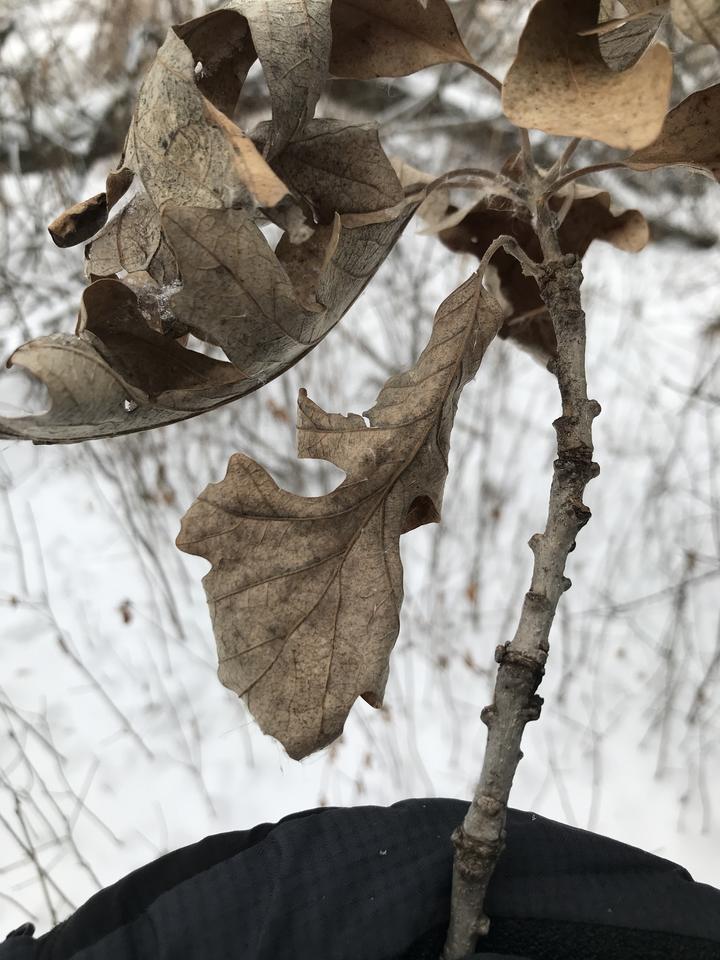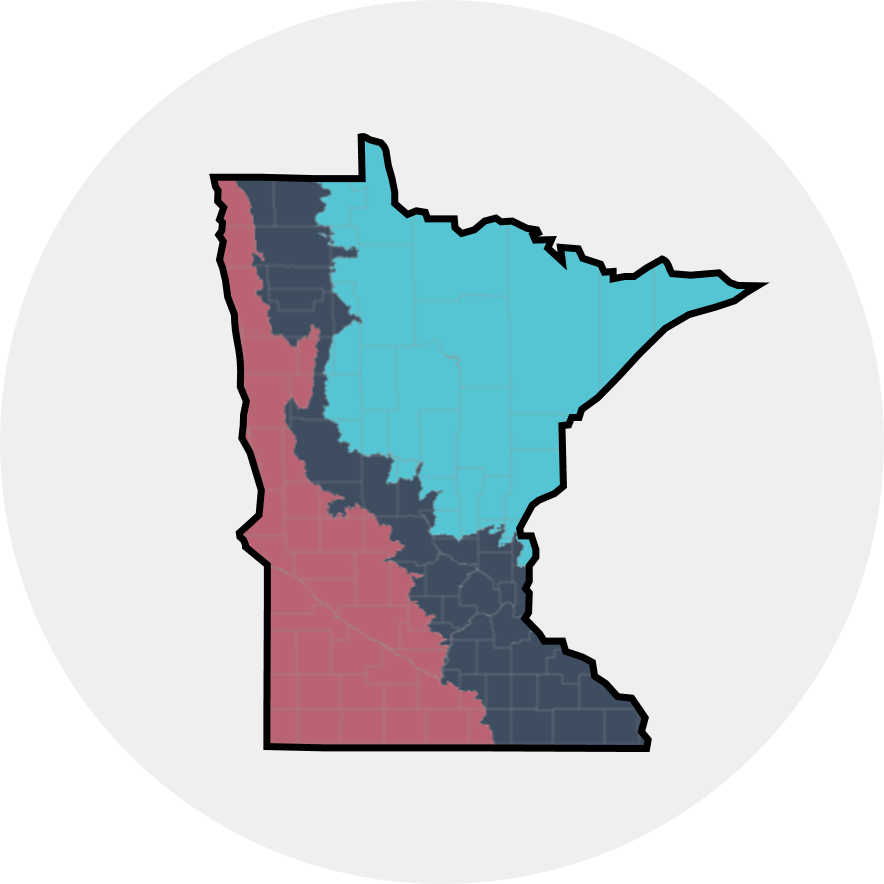More names for this tree
Anishinaabemowin: Mitigomizh
Dakota: Utahuçaŋ (oak tree)
The Dakota and Anishinaabe were among the earliest people to name Minnesota’s plants and animals, as well as to understand them in relation to Minnesota’s climate and seasons. Those original names are still in use, and several are included on the Season Watch website. However, complete translations were not available.
Latin (or scientific name): Quercus macrocarpa
The scientific community has a convention of assigning agreed-upon Latin names to every kind of organism. Using scientific names helps people communicate confidently about the same organism and organize lifeforms based on how closely related they are.
Page contents
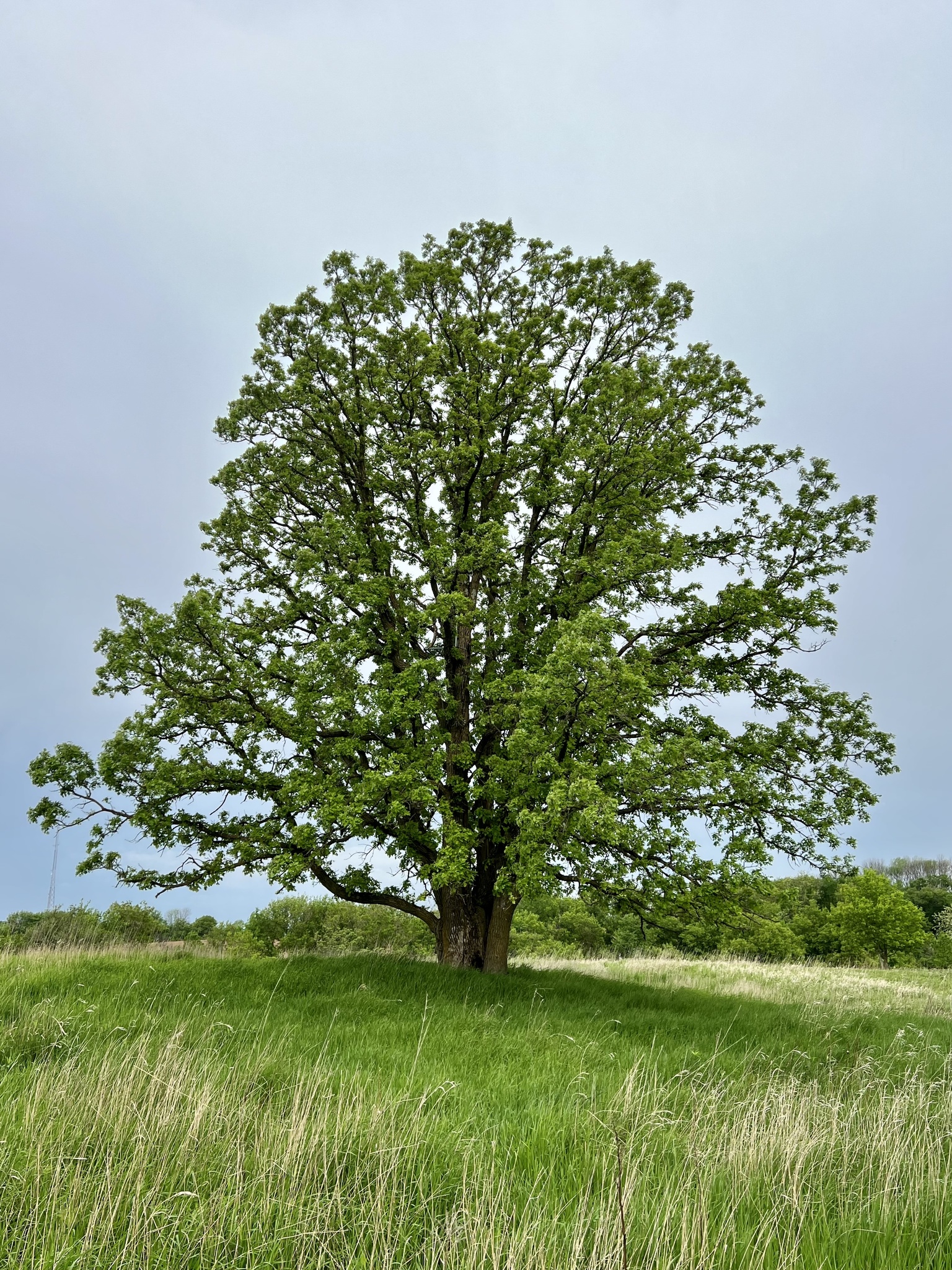
Photo © rmdnat, some rights reserved (CC-BY-NC)
iNaturalist observation
About the bur oak
- Common in Minnesota, the bur oak can be distinguished by its deeply lobed, shiny leaves.
- Before European settlement, a type of ecosystem called oak savanna was common in Minnesota. Bur oaks are a key species in these now threatened habitats.
- Bur oaks have both male and female flowers growing on the same tree. In Minnesota, the flowers typically emerge in April or May.
- The fruit of an oak is called an acorn. Bur oaks' acorns are the largest of all Minnesota's native oak species.
- A deciduous tree, bur oak leaves turn yellow or orange in fall. However, the brown leaves cling to the tree all winter instead of falling to the ground.
- Fun fact: Bur oak acorns can be eaten after boiling to remove bitter-tasting tannins. The acorns are also a favorite food source for many forest animals.
Visual guide to phenology
Watch for the appearance of leaves, flowers, and fruits. Take notice of when flowers open and fruits ripen.
Note to observers
This page explains general clues to watch for when observing bur oak phenology. However, this page does not instruct observers on how to identify this plant or collect data in a standardized way.
- For help with identification, see Minnesota Wildflowers.
- For guidance on collecting data, see Nature’s Notebook.
Graphs and historical data
Note: The Orientation Center provides a map, as well as information on reading graphs; interpreting summary statistics, who collected the data and how; and how to download datasets for independent exploration.
Leaf budbreak
- Earliest: April 5 (occurred in 1987)
- Average: April 24
- Latest: May 31 (occurred in 2013)
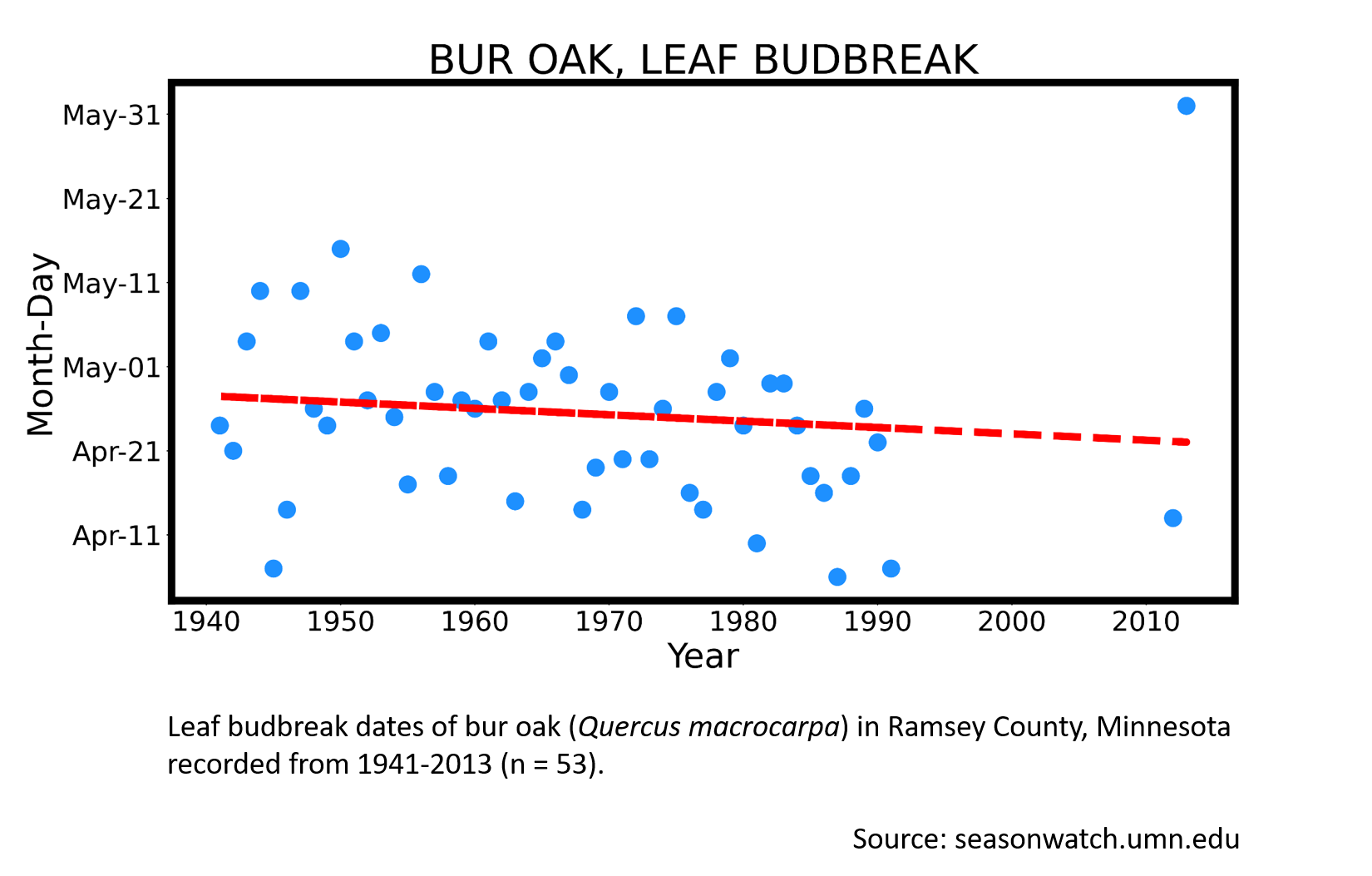
Keep exploring Season Watch
Keep exploring Season Watch
Co-author: Audrey Negro, Minnesota Master Naturalist
